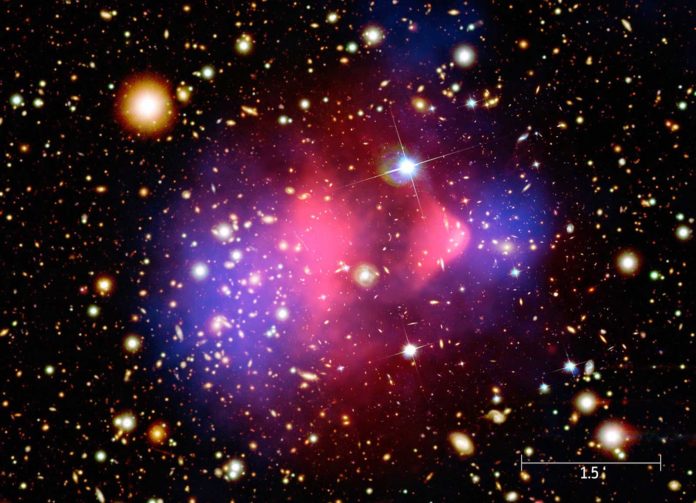Clusters of galaxies are the largest known gravitationally bound structures in the Universe. At the point when clusters collide, they create merger shocks on cosmological scales, which change most of the portion of the kinetic energy carried by the cluster gaseous halos into heat.
Recently, an international team of astronomers has announced the discovery of two clusters at the verge of colliding. They’re just 300-600 million years away from impact– astronomically close when you consider it as will take a billion years to merge.
This will enable astronomers to test their computer simulations, which show that in the first moments, a shock wave is created between the cluster and travels out perpendicular to the merging axis.
RIKEN-researcher and first author Liyi Gu said, “X-ray and radio images of these clusters show the first clear evidence for this type of merger shock. The shock created a hot belt region of 100-million-degree gas between the clusters, which is expected to extend up to, or even go beyond the boundary of the giant clusters. Therefore, the observed shock has a huge impact on the evolution of galaxy clusters and large-scale structures.”
ICRAR-Curtin’s Dr. Huib Intema, from the team who found the cluster, says, “they are planning to collect more snapshots to ultimately build up a model describing the evolution of cluster mergers.”
“Radio observations at very low frequencies provide a unique view on these clusters, in this case pinpointing the locations of old radio jets that light up again due to the merger. Australian-based radio telescopes like the Murchison Widefield Array (MWA) and the future Square Kilometre Array (SKA) are particularly sensitive to these signposts. Mapping out the whole radio sky will inevitably lead to the discovery of even more of these systems. This will help us to complete our understanding of the role of merger shocks in the formation of the largest structures in the Universe.”
The team studied the colliding pair during an observation campaign carried out with three X-ray satellites (ESA’s XMM-Newton satellite, the NASA’s Chandra satellite, and JAXA’s Suzaku satellite) and two radio telescopes (the Low-Frequency Array [LOFAR], a European project led by the Netherlands, and the Giant Metrewave Radio Telescope [GMRT] operated by National Centre for Radio Astrophysics of India).
The study is published in the journal Nature.
